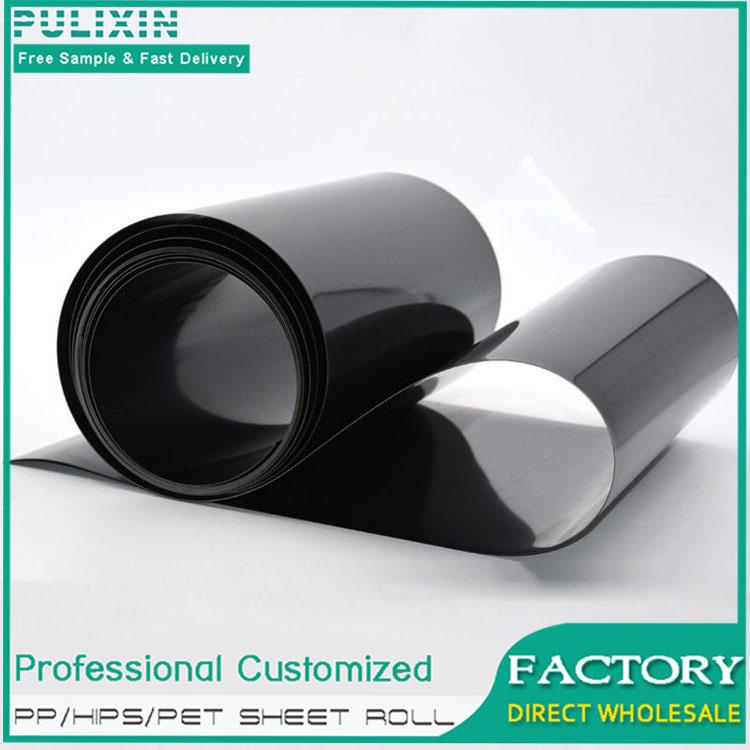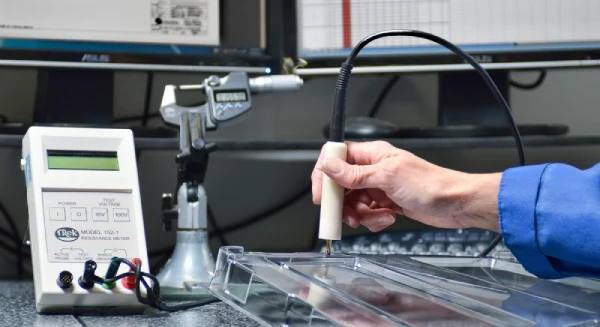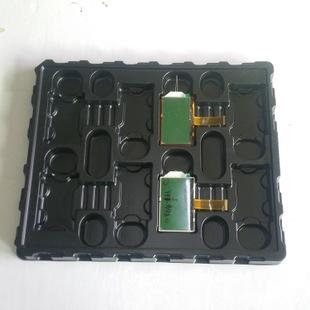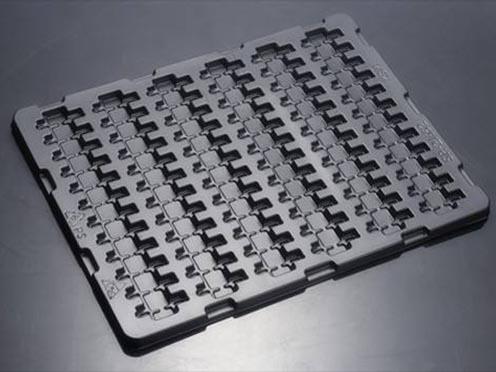Cases of Conductive PP Plastic Sheet in Thermoformed Trays for Electronic Parts
As the electronics industry develops, the complexity and sensitivity of electronic parts are also increasing. In order to ensure the safety of these parts during production, transportation and storage, companies need a packaging material that can provide good protection and prevent static electricity accumulation. Conductive polypropylene (PP) plastic sheets have become an ideal choice for thermoformed trays for sensitive electronic parts due to their unique conductive properties and mechanical strength.
Introduction to PP Plastic Sheets
Polypropylene (PP) is a thermoplastic polymer that is widely used in various packaging materials due to its high strength, chemical resistance and good thermoforming properties. PP sheets have the characteristics of light weight, high toughness and impact resistance, and are particularly suitable for packaging applications that need to withstand various external forces and environmental changes.
In addition, PP materials also have excellent moisture resistance and chemical corrosion resistance, and do not react with most chemicals, which makes it popular in the electronics, pharmaceutical and food industries.

Principle of Conductive Dissipation
In the packaging of sensitive electronic components, the accumulation and discharge of static electricity may cause irreversible damage to the components. To solve this problem, conductive dissipative materials came into being. Conductive PP sheet has a certain conductivity by adding conductive carbon black or other conductive fillers to the PP matrix, which can effectively dissipate static charge and prevent static electricity accumulation and discharge. The surface resistivity of this material is usually between 10^4 and 10^11 ohms, which can meet the static dissipation requirements of most electronic component packaging.

Challenges encountered
When developing conductive PP plastic sheets for customers, we encountered several challenges:
1. Balance between conductivity and mechanical properties:
The addition of conductive fillers often affects the mechanical properties of PP materials, such as strength, toughness and plasticity. How to maintain good mechanical properties without reducing the conductivity of the material is a key issue that needs to be solved.

2. Control of material uniformity:
In order to ensure uniform conductivity of the material throughout the sheet, the conductive filler must be evenly dispersed in the PP matrix. This requires not only a sophisticated batching process, but also high-precision extrusion and calendering equipment.
3. Optimization of thermoforming process:
The thermoforming temperature and molding conditions of conductive PP sheets are different from those of ordinary PP sheets. How to adjust the thermoforming process parameters so that it can meet the complex geometric shape requirements of the tray while maintaining the conductive properties of the material is a technical problem.

Solution
In response to the above challenges, we have taken a series of measures to optimize the performance and production process of conductive PP sheets:
1. Optimize the conductive filler ratio:
Through many experiments, we found the best ratio of conductive filler to PP matrix, ensuring that the material has stable conductivity without significantly reducing the mechanical properties. At the same time, we selected high-quality conductive carbon black to enhance the conductivity and dispersibility of the material.
2. Improve the production process:
We improved the extrusion and calendering processes and introduced advanced mixing equipment to ensure the uniform dispersion of conductive fillers in the PP matrix. In addition, we adjusted the thermoforming process parameters and successfully achieved high-precision molding of the material by optimizing temperature, pressure and molding time.
3. Strict quality control:
During the production process, we carried out strict quality inspections on each batch of conductive PP sheets, especially in terms of conductivity and mechanical strength. By introducing automated testing equipment, we are able to monitor the material properties on the production line in real time to ensure the quality consistency of the final product.
Final Result
After many rounds of experiments and improvements in production processes, we successfully produced conductive PP plastic sheets that meet customer needs. This material not only has excellent conductive dissipative properties, which can effectively protect sensitive electronic components from electrostatic damage, but also retains the original mechanical strength and toughness of PP materials, and can be easily processed into complex tray shapes during thermoforming.
The conductive PP tray performs well during transportation and storage, effectively avoiding damage to electronic components caused by static electricity. At the same time, the strength and durability of the tray are also highly recognized by customers. This tray has been widely praised in the market, further enhancing customers’ competitiveness in the field of electronic packaging.
Customer evaluation
The customer is very satisfied with the conductive PP plastic sheet we provide. They particularly pointed out that the material’s performance in electrostatic protection and mechanical properties exceeded expectations. The conductive PP tray not only ensures the safety of electronic components, but also improves production efficiency and reduces damage rates. Customers also mentioned that the environmental protection and recyclability of this material are in line with their pursuit of sustainable development, making their products more attractive in the market.
Relative News
- Application Cases of PS Plastic Sheets in Thermof…
- Today’s shipment: Antistatic PP plastic she…
- Application Case of Antistatic PP Plastic Sheet &…
- Today’s delivery: 20 tons of PET plastic sh…
- White PS plastic sheet thermoformed yogurt cup te…
- Case: Application of PP plastic sheet thermoforme…
- Transparent PET sheet application case: used to m…
- Merry Christmas, warm blessings from PULIXIN
- Training meeting on PP and PS sheet production li…
- PP sheet application case: ideal choice for rice …
